Ancient Egyptian Women – Marriage, Sexuality and Goddesses
Article contains some nudity and sexual imagery…you know, the fun stuff.
Do not control your wife in her house,
When you know she is efficient;
Don’t say to her: “Where is it? Get it!”
When she has put it in the right place.
Let your eye observe in silence,
Then you recognize her skill:
It is joy when your hand is with her,
There are many who don’t know this.
~ Advice from the Scribe named “Ani” in New Kingdom Egypt
Would you believe me if I told you that more than a thousand years ago, women in Ancient Egypt enjoyed many of the same rights that women in our current society enjoy today? A woman could own and sell private property, resolve legal settlements, write a contract, initiate a divorce, file lawsuits, have a profession and inherit property (of course these rights also depended on the woman’s social class). I wouldn’t say that Ancient Egyptian women had complete parity to men before the law. Yet they did have many rights that were out of reach for women in neighboring Greece or Rome.
This article will examine what it was like to be a woman in Ancient Egyptian society and the different rights and responsibilities that they had. Most women performed domestic tasks in the home. However, there were female midwives, priestesses, weavers, dancers, musicians and even professional mourners. (Hiring complete strangers to act sad at your relative’s funeral was pretty normal in Ancient Egypt). Also, even though most of the positions of authority were occupied by men, there were a few female pharaohs, such as Cleopatra, Nefertiti and Hatshepsut. It also wasn’t uncommon for a woman to serve as a regent (temporary ruler) when her husband died, until her son was old enough to take over. It was preferred for a woman with the right bloodline to be in power temporarily, than a man with the wrong bloodline.
In Egyptian Mythology, there is also a strong association with Goddesses as protectors. For example, when a body was mummified, the organs were placed into four different jars. Each jar was represented by one of the son’s of Horus, and each of these sons were protected by a different Goddess. If you’re curious about these jars, you can read more about the son’s of Horus here and their corresponding Goddesses.
GODDESSES
Isis
The most obvious example to start with is Isis. Her name literally means “throne.” She is the symbol of the Pharaoh’s power. Isis was worshiped as the ideal mother and wife, as well as the patroness of nature and magic. She was the friend of slaves and the downtrodden, but also listened to the prayers of the wealthy. In addition to that, she was the protector of the dead and the Goddess of children. Her birth is significant because she was the first daughter of Geb (Father of the Earth) and Nut (Mother of the Sky).
She married her brother Osiris, who was the first son of Geb and Nut. Osiris was the God of the afterlife, vegetation and beer. He was a merciful God of the dead. Osiris’s brother Set grew jealous of his power, cut him into pieces, and scattered the pieces around the land. It was up to Isis to use her restorative magic to find the pieces of Osiris and piece him back together again.
Perhaps this story can serve as a powerful metaphor about love and marriage. At times when you’re falling to pieces, it is up to your significant other to help put you together again. There is also a powerful metaphor in this story about redemption, rebirth and eternal life.
At first, only the pharaoh was associated with the God Osiris in death. Yet eventually, most of the common people in Egypt were allowed to associate themselves with Osiris in death. Osiris and Isis were very popular among the common people of Egypt, because they offered the people a connection to eternal life.
CONNECTIONS BETWEEN ISIS/OSIRIS CULT AND CHRISTIANITY?
There are some theories that the early Christians were influenced by the themes of redemption and eternal life present in the Osiris and Isis myth. Pictures of Isis sucking her son Horus were common in the Roman Empire at the time of Christianity. For example, murals of Isis suckling her son Horus were popular in the Roman empire before the characteristic picture of the Virgin Mary nursing Jesus arose in prominence. Perhaps the former inspired the latter.
The Original Trinity, Brought to You By Egypt (Metal-Gaia)
A MURAL IN THE ROMAN ERA OF ISIS AND HORUS
THE “REGINA CAELI LAETARE”
OTHER POPULAR EGYPTIAN GODDESSES
Bastet: A feline Goddess. The daughter of the sun God Ra. She was worshiped for her protective and maternal nature.
Hathor: A cow Goddess associated with dancing, music and love. She was also known as the “Lady of Heaven.” She protected women during pregnancy, was worshiped as a Goddess of fertility, and was seen as wise and affectionate towards both the living and the dead.
Sekhmet: The lion headed Goddess of war, fire, hunting, wild animals and vengeance. She was called “The Powerful One.” She helped kings defeat their opponents. She was also associated with both disease and health.
Maat: The Goddess of truth, morality, justice, order and harmony. She represented the natural order of the universe. She was typically depicted with an ostrich feather on her head. The weighing of the heart ceremony that took place in the afterlife, which determined whether you were allowed to have eternal life, took place in the Hall of Maat. In Egypt there were 42 laws of Maat that one had to follow in order to enter the afterlife. These were a series of negative confessions, a list of “I didn’t do ____.” Law # 34 interests me because it relates to taking care of the environment: “I have not polluted the water.” Also, another interesting thing to note is that the laws of Maat don’t say much about sexuality, aside from mentioning adultery. This is probably because the Egyptians had a very mature culture when it came to sexuality, which we will discuss more below. A majority of these laws actually relate to emotional control, which is important for living a healthy and virtuous life.
MARRIAGE, FERTILITY AND SEXUALITY
…Revel in pleasure while your life endures
And deck your head with myrrh. Be richly clad
In white and perfumed linen; like the gods
Anointed be; and never weary grow
In eager quest of what your heart desires –
Do as it prompts you…
~ Lay of the Harpist
Nudity
The Egyptians had a very natural view towards sexuality and the human body that was untainted by guilt. Walking around naked for example was not the taboo that it is today. Though I’m guessing part of this attitude was due to how unbelievable hot Egypt can be. The average temperature of an Egyptian summer is 120 degrees farenheit (48 degrees celsius). Children tended to walk around naked until puberty (about 12 years of age). Women of a lower social status walked around topless and wealthier women wore loose clothing that was sometimes transparent. Female entertainers frequently performed naked.
Sexuality
Egyptians lived in a Sex Positive culture. They did not have the same guilty associations with sex that those of us in the modern world have today. Before marriage, it was not wrong for a woman to take a sexual lover. Knowledge of contraceptives was also commonplace in Ancient Egypt, which probably explains why premarital sex and prostitution weren’t a big deal.
Homosexuality
There is also evidence that homosexual sex wasn’t a big deal either. More information on Homosexuality in Ancient Egypt on Metal Gaia
Prostitution
A popular image of prostitution today is a woman sticking out a stilettoed heel and a fishnet clad leg to interest her prospective customers. Ancient Egyptian prostitutes did something similar, they advertised themselves in a blue faience beaded fish-net dress, painted their lips red and tattooed themselves on the breast and thighs. However, the modern idea of prostitute and the Ancient Egyptian one are very different. In the modern world, we typically have a negative association with prostitutes, even if they are high class “escorts” that make thousands an hour sleeping with the wealthiest CEO’s.
An outfit that may have been worn by sex workers. Source for picture
The reason why the modern idea of prostitution can’t compare with Ancient Egyptian sex workers, is because their profession wasn’t tainted by guilt. Many sex workers were associated with Goddesses of fertility and were regarded with respect. Also, it is not certain that all prostitutes slept with people for money. Some were temple prostitutes who had a connection to the divine. Others were entertainers who would dance, play music and perform sexual acts all in one.
There are some theories that men slept with prostitutes before marriage, in order to learn how to please their wives, and that young girls engaged in prostitute related acts, in order to learn about sexuality in marriage. However, these are just theories and we don’t have any real proof for these ideas.
Marriage
Take a wife while you are young,
that she may make a son for you
while you are youthful.
~ The Egyptian Scribe Ani
A woman generally could get married at any age, and typically married after she started her period around the age of 14 or 15. Men got married when they were around 17 or 20. This may seem very young to the modern person, however we must remember that lifespans were shorter in Ancient Egypt. Documents written in the Ptolemaic Period reveal that the average life expectancy was 58 for women and 54 for men (tour egypt). This doesn’t seem too bad, but we must remember that in the modern developed world, the average person lives to be about 70 or 80, which naturally drags the average age of marriage up to mid 20’s or early 30’s.
Consent from the parents was also needed to get married. This was especially important in the upper classes, since marriage determined the division of property and social status. However, as religious and ceremonial as Egyptian society was, what is surprising to note is that there was no ceremony for marriage: no special dress, no exchange of rings and no exchange of vows. It was a fairly simple affair where the wife moved into the house of her husband. He would either be living alone or with his parents.
While this doesn’t sound very romantic, there is much literature and poetry that suggests that the ideal marriage was filled with affection, love and tenderness.
However, one thing that made the Egyptians much smarter than those of us today, is that they usually drafted up a contract before the marriage about how property would be distributed, and what would happen in the event of divorce. That’s right, they had a prenup power up! This was more relevant to people in the upper classes, who had more property and land to fight over.
A Marriage Contract from 219 BC
“The Blemmyann, born in Egypt, son of Horpais,
whose mother is Wenis, has said to the woman
Tais, daughter of the Khahor, whose mother is
Tairerdjeret: I have made you a married woman.
As your womans portion, I give you two pieces of
silver. If I dismiss you as wife and dislike you and
prefer another woman to you as wife, I will give you
two pieces of silver in addition to the two pieces of
silver mentioned above and I will give you one third
of each and everything that will accrue to you and me.”
Divorce: Divorce was not hard to get. Both a man or a woman could initiate a divorce and write up the divorce contract. Men divorced their wives if they were incapable of baring children – or baring a son. He may also divorce his wife if she stopped pleasing him. A woman could divorce her husband for mental and physical cruelty. In some cases, if a woman initiated divorce, she forfeited her right to communal property. Also, as you can see from the statement above, women got spousal support in the case of a divorce, which was about 1/3 of her ex-husband’s earnings.
However, there were other options if the parents were childless: adoption and polygamy were two. Sometimes men had concubines, and these women did not have the same rights as their wives. However, polygamy was uncommon for most people. It was mainly practiced by the pharaoh so that he could display his virility and sire several children.
Incest: One taboo topic that comes up when talking about Ancient Egypt is that of incest. Incest is another one of those things that was allowed for the Pharaoh, in order to keep the royal bloodline in place, but not commonly practiced among most people.
Adultery: Now, throughout most of this article I’ve waxed on about the sexual openness of Ancient Egyptian society and women’s freedoms. However, adultery was a completely different affair (get it…affair…it’s a pun! okay sorry). While sex before marriage wasn’t a big deal, an extra-marital affair was completely off the table. The bond of trust and fidelity in marriage and family were highly valued by the Ancient Egyptian people, so valued in fact the worst punishment for a woman was death. This was described in the Egyptian Tale of Two Brothers. For a man, on the other hand, the worst thing that could happen to him is that he would be forced into a divorce.
Fertility
“Come down, placenta, come down! I am Horus who conjures in order that she who is giving birth becomes better than she was, as if she was already delivered. Look, Hathor will lay her hand on her with an amulet of health! I am Horus who saves her!” ~ A Spell for a Healthy Delivery
Fertility was a big deal in Egypt because the child mortality rate was so high. In some Egyptian cemeteries, a third of all the buried were infants. However, this statistic depends on which region of Egypt we are talking about. It’s hard to say exactly why the infant mortality rate was so high, but some historians believe it was due to the common occurrence of infection and the Egyptian diet. Their diet was high in cereal grains and deficient in Iron. Even the wealthy did not eat meat everyday. Many Egyptians used amulets, spells and the protection of the Gods to try and protect their children from death.
However, despite the large infant mortality rate, Egyptians still had large families and showered their children with much affection. It is theorized that the average mother raised 4-6 children. Some families even managed to raise 10-15! Both a woman’s femininity and a man’s masculinity were judged by how many children they could create.
In addition to being obsessed with fertility, Egyptians were also obsessed with life after death. We obviously know this since Egyptian tombs are the richest sources of Ancient Egyptian culture. Children were necessary to perform burial rites for the parents. Which was another incentive for rearing a large brood of children, this increased the likelihood that at least one child would survive long enough to perform a parent’s burial rites.
ADDITIONAL INFORMATION
There’s obviously much more that I could say about this topic, but I’m trying to write an article here about the basics, not a book. One of the great things about Ancient Egypt, is that much of their culture was written down. Unlike many other Pagan societies in the ancient world, the artifacts of their society remained intact. Part of this is because they had some of the most comprehensive burial practices out of any culture in the world. In the tombs of the pharaohs, they recorded the events of his/her life and buried the pharaoh with all the items they used in their day to day life so that they could use these items in the afterlife.
Thanks to these methods of preservation, we have a window into ancient values that Abrahamic Religions tried to erase from the ledger of time. We see a culture that had healthy ideas about gender, the human body and sexuality. We see a culture that valued women as protectors and mothers, and respected them enough to give them legal rights.
As we become a culture more open about sexuality, there is certainly much we could learn from the Ancient people who lived on the Nile. And the great news is that most of it is written down and available to read! So do some internet searches, watch a few documentaries and read some books! Get informed!


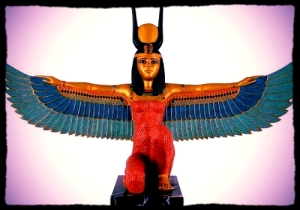
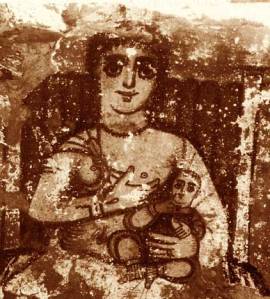
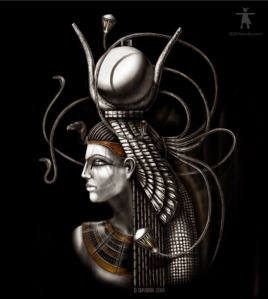

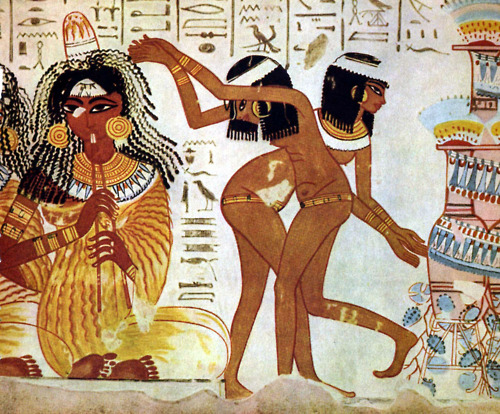
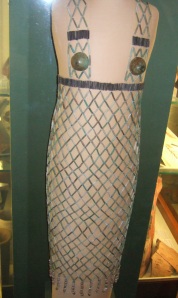
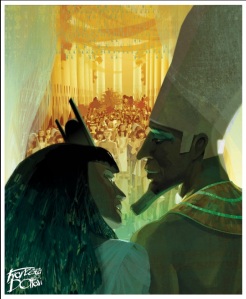
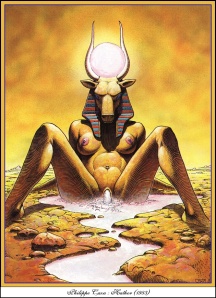















excellent and highly informative article. well researched, written and illustrated. You’re good Ms Jessica!
November 11, 2013 at 3:43 pm
Thanks!
November 11, 2013 at 3:55 pm
A great summary of information in one place; thanks.
November 11, 2013 at 6:02 pm
Jessica – i finally have a name to refer to you besides Metal Gaia! Yes, well written and i learned some things here, even though i suck up Egyptian history like wine. Hail to ISIS, the Mother of All Goddesses of the Mediterranean and up into Europe in Hermeticism and Western Magick!
November 11, 2013 at 6:05 pm
Yes, now you know my secret, lol. I think the other reason Ancient Egypt is interesting, because it was one of the main cultures that got people interested in Paganism and the Occult around the end of the 19th century – especially in terms of aleister crowley and all that. I guess it’s because they have a very well preserved pre-christian culture. I think it’s also because magic was a big part of life in Ancient Egypt, whereas other cultures tended to see magic as something subversive.
November 11, 2013 at 6:19 pm
Yes the worship of ISIS in Hermeticism filtered into Masonry and many other esoteric and occult groups, including Thelema, and i love the Egyptian style rituals Crowley wrote. I have never felt much attraction to Greek or Roman religions, though we know so little of the Real mystery religions they practiced, only the state sponsored versions. I have always been attracted to the Egyptian gods and goddesses. In the witchcraft i was taught Astarte is a main Goddess, and she to me is the same as Ishtar and ISIS so i can feel the old connection.
November 11, 2013 at 6:38 pm
Wonderful article!
Can I ask, where did you get the quotes beneath some of the sections, including the Lay of the Harpist? I’ve been looking into reading similar prose, and I can never find a concise place to start.
November 11, 2013 at 6:32 pm
Thanks. I just did an internet search.
November 11, 2013 at 7:02 pm
Reblogged this on Xoheidisays's Blog.
July 17, 2014 at 8:44 pm
Pingback: songsterr born of osiris | pxlnet
Proffesional mourners was common in nordic tradition ás late as 20th Century, especially in Karelen.
http://nordicwomensliterature.net/article/sorrow-and-bitterness
January 16, 2015 at 10:18 pm
The female illuminati and their contribution to history being questioned:
February 5, 2015 at 3:42 pm
More from Tsarion regarding the female societies.
NEW Michael Tsarion Female Illuminati Interview – Truth Warrior May 2015
June 17, 2015 at 3:59 pm
Look especially at 1:34:00-1:37:00
June 17, 2015 at 4:52 pm
And 1:53:30-1:56:30
June 17, 2015 at 5:14 pm
You only have to look so far….
http://vigilantcitizen.com/pics-of-the-month/symbolic-pics-of-the-month-0615/
June 18, 2015 at 7:26 am
Pingback: Ancient Spartan Women | Metal Gaia
Pingback: Ancient Egyptian Baby Clothing | disencumber